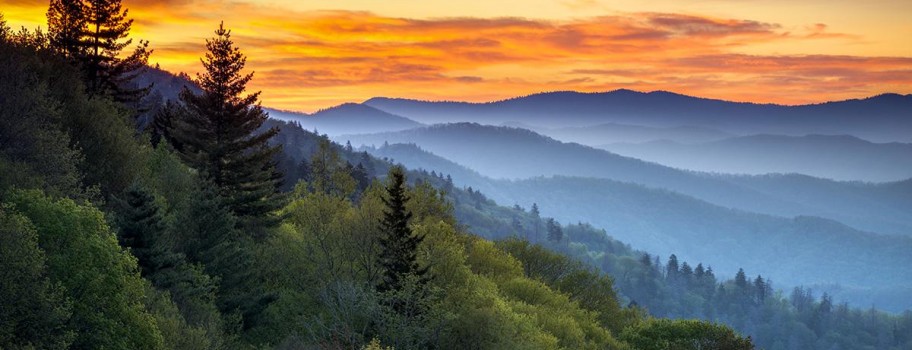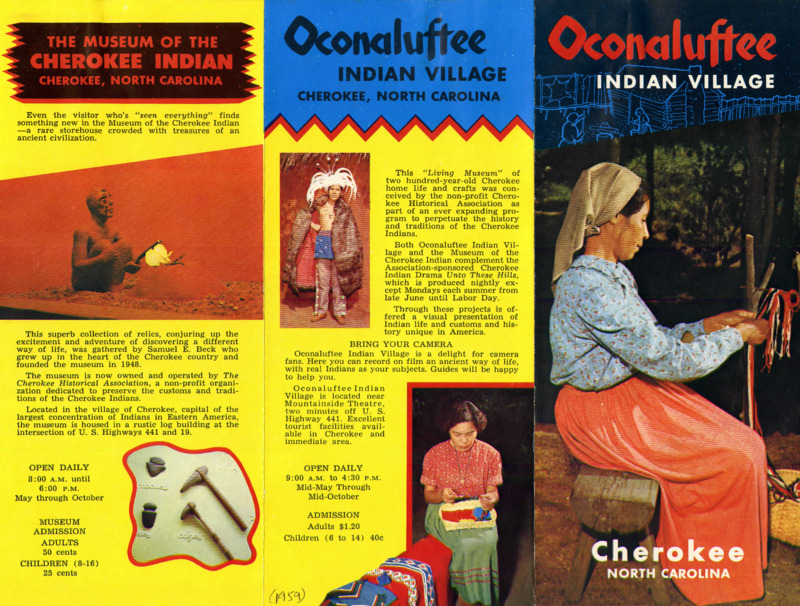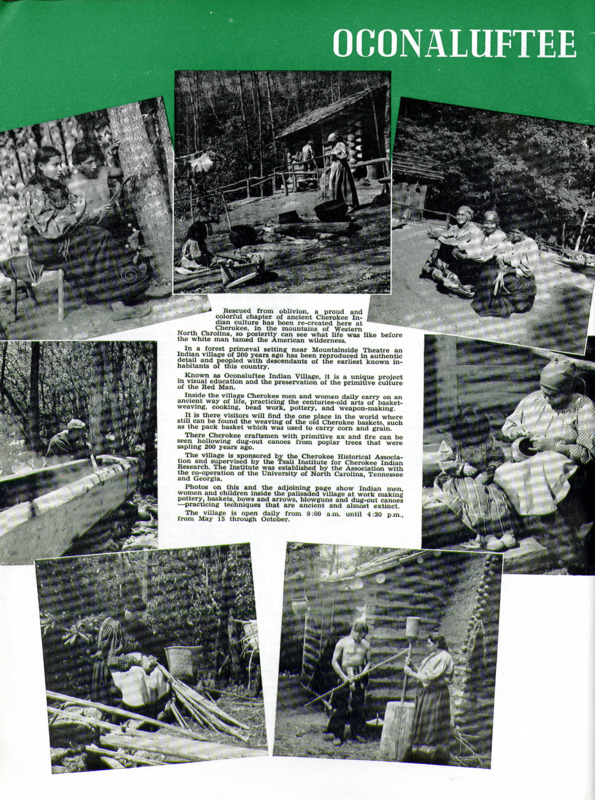Cherokee Historical Association
The Kelly E. Bennett papers (AC.461) contain documents that span the Cherokee Historical Association’s (CHA) beginnings in the 1940s, when it was just an idea percolating among the members of the newly formed Western North Carolina Associated Communities, through its operations in the early 1970s. The collection provides an account of the successes and challenges the organization faced during this timeframe—through the many letters, meeting minutes, brochures, information bulletins, press releases, invitations, newspaper and magazine clippings, budget and expense reports, accounting documents, and other official documents that passed through Dr. Bennett’s hands during his decades of service as a CHA trustee.
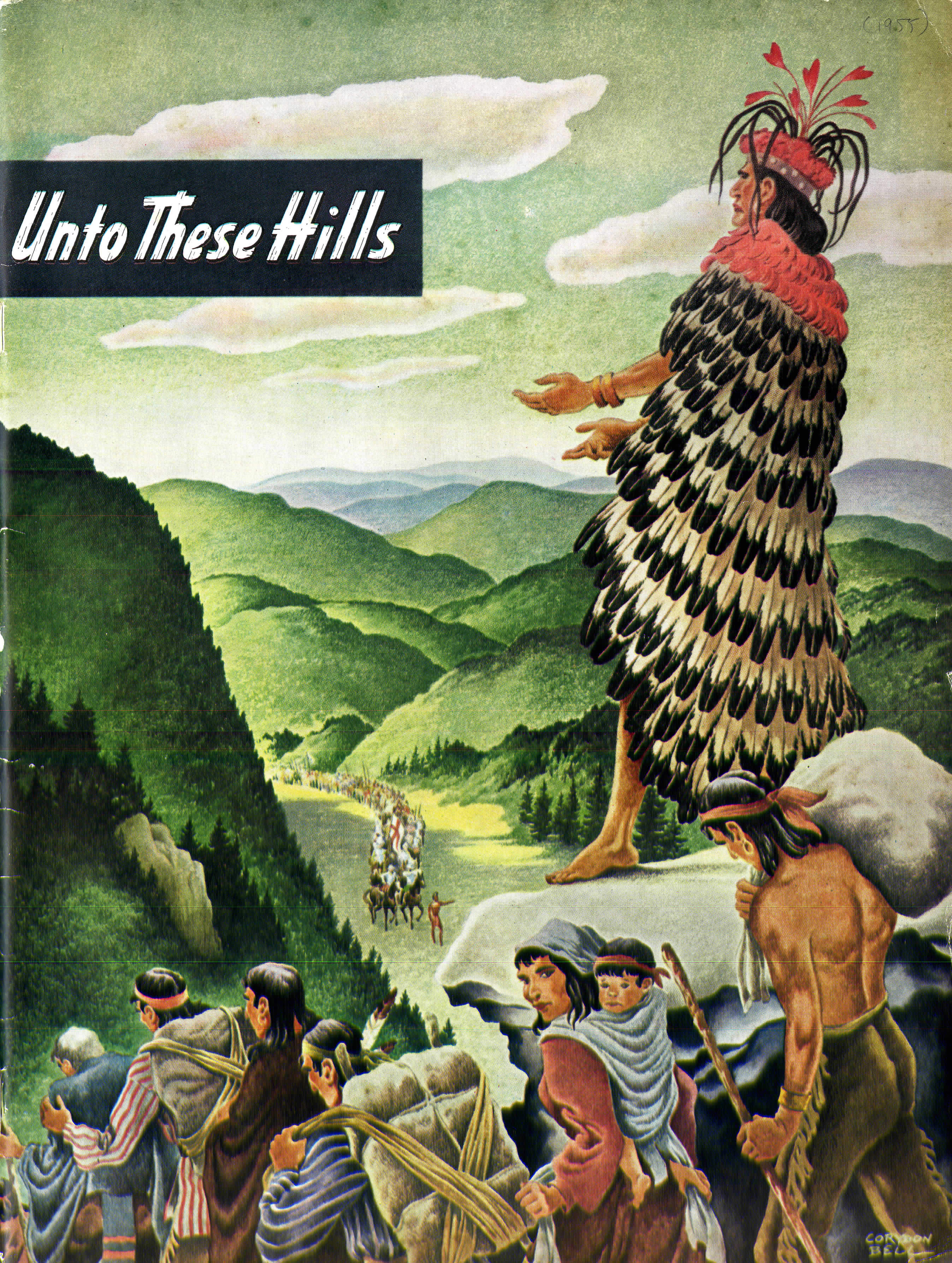
Cover page of "Unto These Hills" program, 1955. Programs such as this one were produced to provide information about the drama and its cast, playwright, composer and director as well as descriptions of other Cherokee Historical Association initiatives, such as Oconaluftee Village and the Museum of the Cherokee Indian. The last several pages of the program were devoted to advertisers ranging from the Mead Corporation to the North Carolina Apple Festival.

Page 7 of "Unto These Hills" program featuring a photo of Board of Trustees of the Cherokee Historical Association, 1954. Kelly E. Bennett (top row, third from left) would serve as treasurer from 1955 into the 1960s.
Highlights of the Cherokee Historical Association, 1948–1973
-
In 1948, Kelly E. Bennett co-founded the Cherokee Historical Association, a non-profit corporation dedicated to preserving the history and traditions of the Cherokee and the economic progress of the 4,000 Cherokee living on the 65,000 acre-boundary of the Eastern Band of Cherokee.
-
Bennett, a CHA trustee into the early 1970s, became CHA treasurer in the 1955 when treasurer and Cherokee Indian Agency superintendent Joe Jennings resigned to take a post in Washington, D.C. Benett would serve in the role of treasurer through the 1960s and would serve tenures as chairman and treasurer of the Advisory Committee of the Museum of the Cherokee Indian, to which he donated rare books and materials.
-
In the early 1950s, the CHA created several cultural and entertainment attractions, including “Unto These Hills,” an outdoor drama depicting Cherokee history, Oconaluftee Village, a re-creation of a 1750s Cherokee Village, and Museum of the Cherokee Indian, which was deemed to have the finest collection of Cherokee materials outside of the Smithsonian (Personal correspondence, George Myers Stephens to Kelly E. Bennett, October 27, 1952).
-
In addition to managing and promoting CHA tourism and cultural initiatives, the organization spearheaded a number of programs and initiatives aimed at benefiting the Cherokee people, including educational scholarships and loan programs, awards and contests for arts and crafts, agricultural products, and gardening, and educational programming, sponsorships, and fellowships. The CHA was also heavily engaged in the day-to-day, year-to-year operations of its enterprises, and as such, it hired staff, raised salaries and provided bonuses, paid Tribal levies, constructed buildings, housing and other facilities, installed nature trails, installed and repaired waterlines, repaired theatrical equipment, managed budget deficits and engaged in heavy fundraising, sponsored educators, and more.
-
The CHA recognized the benefit in promoting its initiatives alongside other regional tourism organizations and their activities, such as the annual spring wildflower pilgrimage to Great Smoky Mountains National Park Tour. However, it also took notice when nearby tourism destinations, such as Gatlinburg, installed new attractions that competed with those in Cherokee.
-
During Bennett’s tenure with CHA, the organization contended with numerous issues and obstacles that challenged its initiatives, such as "Unto These Hills," or the organization itself---from water supply shortages affecting the Mountainside Theatre, where the drama was held, to challenges from religious leaders regarding the operation of the drama on Sundays, to the negative effects of Daylight Savings Time on drama start times, to the drop in tourism due to gas shortages and inflation.
-
Nevertheless, the boost of tourism and revenue generated by the CHA’s endeavors were widely recognized from Cherokee to Raleigh to Washington D.C. CHA estimated that it had generated $500,000 in “constructive aid” for the Cherokee between 1950 and 1954 (Harry Buchanan, “Unto These Hills” program, 1954). In 1964, the CHA extended an invitation to President and First Lady Johnson to visit during a trip to the region marking an important anniversary for the Great Smoky Mountains National Park, and in the following year, “Unto These Hills” welcomed its two-millionth patron.
-
CHA publicity efforts for its cultural and tourism initiatives encompassed a range of mediums—from radio to print advertisements and billboards to story pitches in major newspapers and magazines—targeting cities across the country.
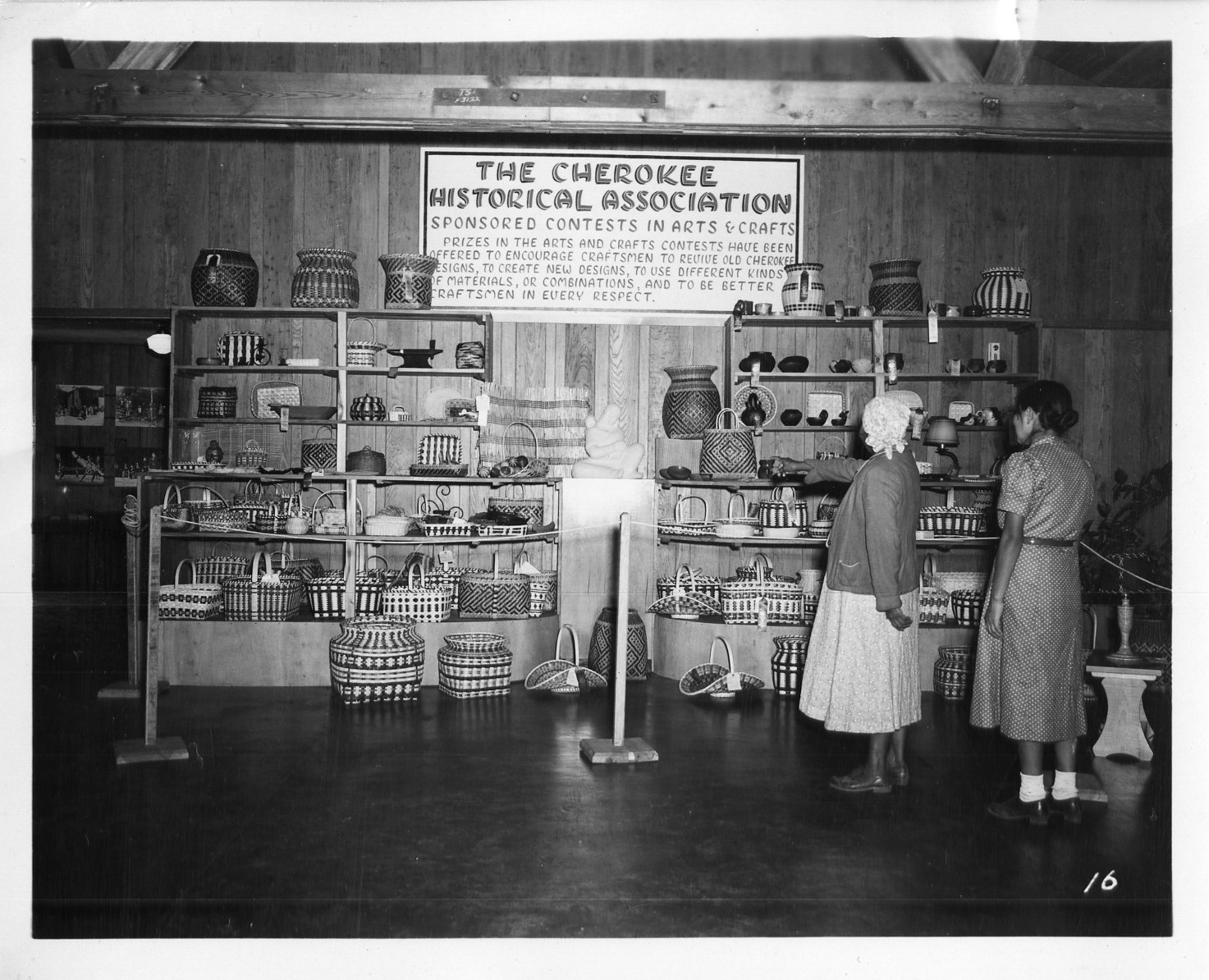
Two women view baskets and other items on display in the Cherokee Historical Association sponsored contest for arts and crafts at the 1951 Cherokee Indian Fair in Cherokee, North Carolina.

Corn, beans, and other food items on display as part of the Cherokee Historical Association sponsored contests at the 1951 Cherokee Indian Fair in Cherokee, North Carolina.

"What happens if it rains?" was attached to information bulletins, travel portfolios, and other information for tour operators and ticket holders in the event of inclement weather conditions during the performance of "Unto These Hills."
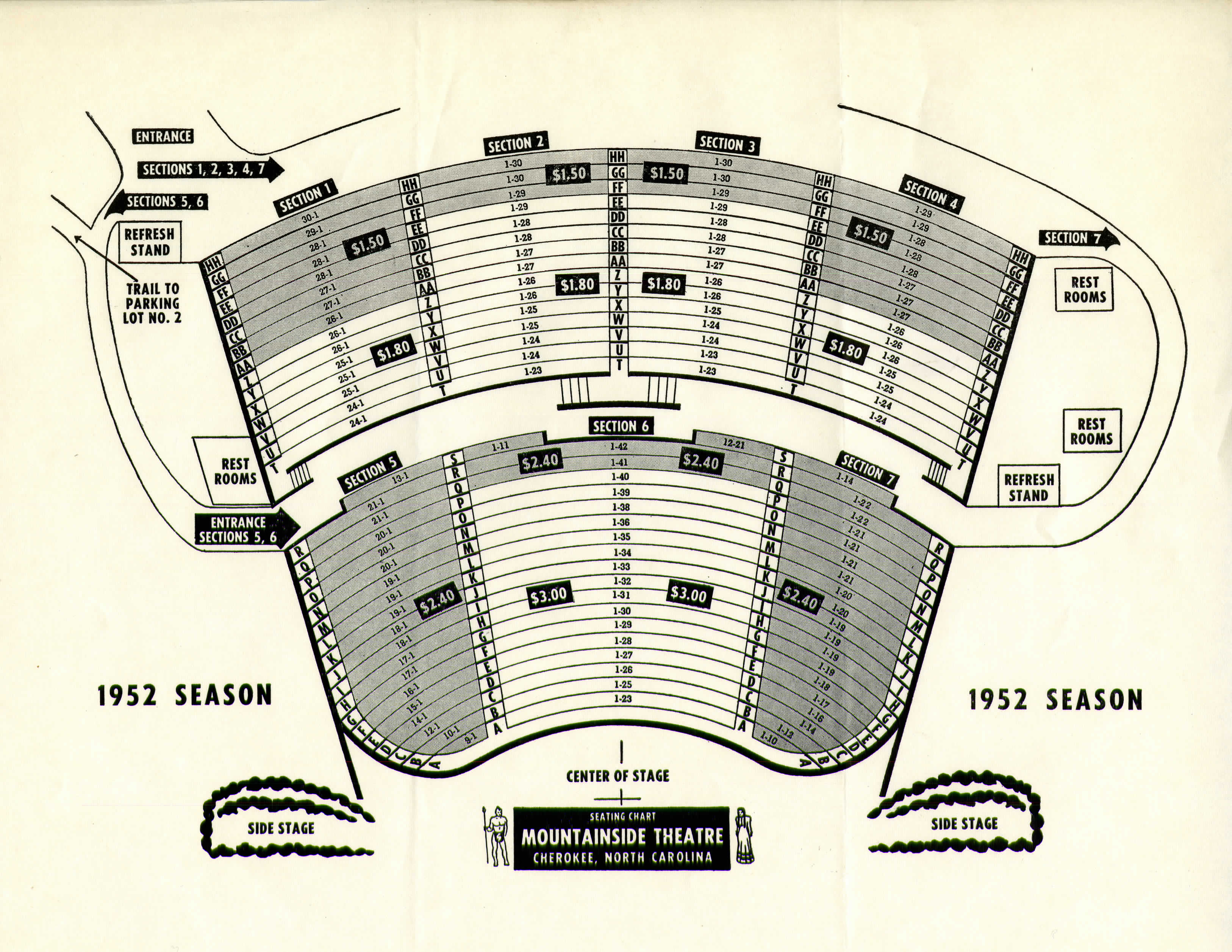
1952 Mountainside Theatre seating chart and pricing for "Unto These Hills" outdoor drama in Cherokee, North Carolina. The theater could accommodate 2,870 patrons or as many as 3,070 with the addition of folding chairs. In 1952, the theater was also the site of interdenominational Vesper services held at 4:30 p.m. on Sundays.
Content and images on this page are courtesy of AC.461, Kelly E. Bennett Papers, Special Collections Research Center, Appalachian State University, Boone, North Carolina. Specifically, Series II, Subseries C, Boxes 9-15.
